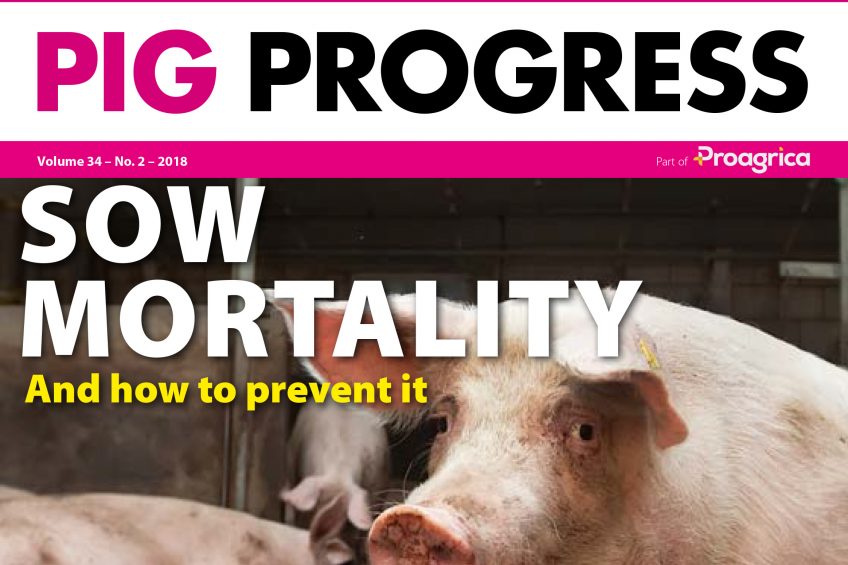Pig Progress 2 analyses sow mortality issue

The 2nd edition of Pig Progress in 2018 is fuller than ever, with a wide array of topics. The cover story this month is the issue of sow mortality, which has sparked a lot of debate. What causes it and are there ways to prevent it?
In a very special cooperation between 2 prominent columnists of Pig Progress, Dr Casey Bradley and Dr Monique Pairis-Garcia have teamed up to delve into the issue of sow mortality. They sum up 12 questions that are relevant to be asked in order to avoid sow mortality. Pages 6-9
Pig country Belgium
Pig correspondent Chris McCullough zoomed in on Belgium as pig country. The country’s size may only be small but its impact is significant, as can be read at pages 12-13.
The health side of animal nutrition
Prof Dr Josef Kamphues is a well-known and eminent scientist associated with the University of Veterinary Medicine in Hanover, Germany. Colleague Kees van Dooren travelled out to learn about the ‘health’ side of animal nutrition – a topic Prof Kamphues likes to remind his audience about. Pages 14-16
On-farm: Keeping finishers at the next level
The Bosgoed-Brink pig farm in the Netherlands recently added a new pig house for almost 3,000 finisher pigs. The idea is to automatically weigh the pigs and feed them according to their weight. The owners are very positive about the approach, as colleague Erik Ordelman picked up in this informative feature. Pages 20-21
Gene editing and castration
Recently an announcement was made that with gene editing technology it is possible to avoid castration issues. Breeding and genetics contributor Benny van Haandel dived deeper into that issue and also wonders what the chances are of public acceptance? Pages 26-28

A tribute to Dr Gordon Lawson
Dr Gordon Lawson was in a way similar to the pathogen he discovered: a complex, creative character and a hard nut to crack, write Dr Elinor McCartney and Dr Alan Rowland. He passed away in early 2018; in this article we look back to his life and meaning. Pages 29-31

Roles of zinc examined
Dipankar Paul and Dr Sanjib Borah of Assam Agricultural University, India, have summed up the different modes of action of zinc in a porcine body. Pages 10-11
Feeding can cost energy
Did you know that feeding can both provide energy but also cost energy? Consultant Gilles Langeoire explains all about it in the last edition of the Heat Stress series. Pages 22-23

Columns on implantation and artificial pig
Monthly columnist John Gadd also finishes off a series he was working on – a glossary rounds off his series of contributions on implantation. Page 17
Casey Bradley in the meantime has learnt how to dream aloud and speaks of an ‘artificial pig’ which might help better understand the mode of action of feed additives. Page 34
To read all the articles in this issue, go to the magazine overview page and sign up with your current website login.











